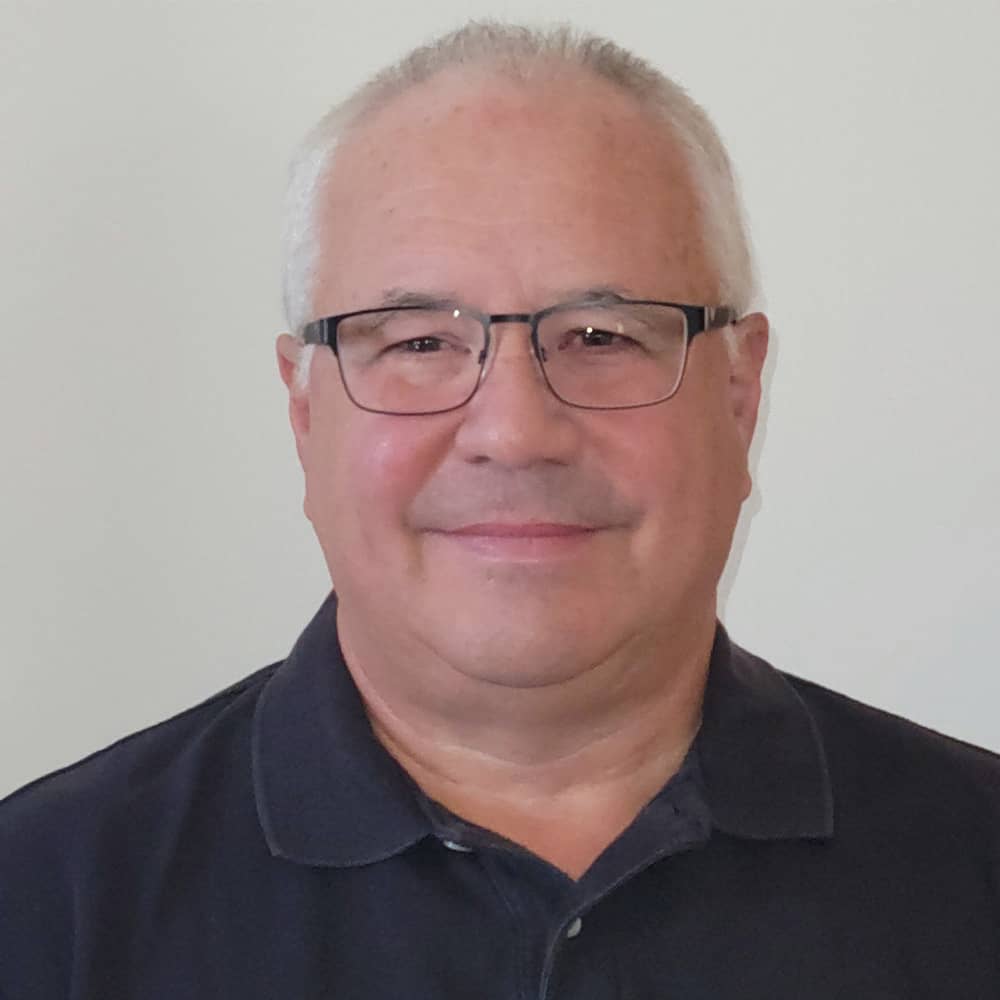
Brian shared his story in January of 2023.
When I advocate for medical aid in dying today, I can only speak from my experience caring for Harriet. People like her — dying people who are in pain, who are uncomfortable, who have no hope of recovery, who are just lying in bed waiting to die — deserve to have this option in Illinois.
Harriet Powell and I had a May-December relationship, as she was quite my senior. We met at work, developed a friendship that extended past her retirement, and then, in 2012, we became a couple.
It turned out that we were both the sort of people who were always saying, “Oh, me? I don’t deserve such kindness.” We could support each other emotionally because we each thought the other person was way more valuable than they thought they were. It made our life wonderful.
We shared our passions with one another: mine for hockey, specifically the Chicago Blackhawks, and hers for drag racing. Harriet had always been a big NASCAR fan, and through some extended family of mine, we developed a friendship with a local dragster “funny car” owner and started attending drag-racing events together.
Everything in our lives was going well when out of the blue, in January 2016, Harriet woke up with pain in her upper back. She thought she was having a heart attack, so we went to the hospital, where she was diagnosed with a bacterial infection.
The next four months were a conveyor belt of testing: X-rays, CT scan, PET scan, multiple lung tissue biopsies. After Harriet’s lung collapsed due to the second biopsy, doctors had to perform emergency surgery to drain the fluid around her heart; both the biopsied lung tissue and fluid were determined to be cancerous.
We went from nothing going wrong in our lives to stage 4 lung cancer in a matter of months.
In June, Harriet started chemotherapy. The oncologists made it very clear that Harriet didn’t have to do chemotherapy and that hospice was an option. But Harriet believed that going through the chemo and whatever else science had to offer was her best shot of getting more time. Unfortunately, we never got any encouraging reports about the chemo’s success.
Three months into Harriet’s chemotherapy, we took a few weeks off to take her sons and their wives to a drag-racing weekend. Our friend got Harriet a golf cart for the trip, since she couldn’t really walk around, and she had a great time driving the golf cart and maneuvering the crowds. It was some of the last real fun she would have.
Harriet was a very strong, stoic person. She never complained. But it was apparent that the chemo exhausted her. In May 2017, after nearly a year of treatment, she completed day one of a new round of chemotherapy and declared that she was done. She couldn’t do the treatments anymore. She was ready for hospice.
At that point, several people affiliated with Harriet’s hospice provider came and educated us around end-of-life planning. We had been unaware of advance directives, but with the help of hospice, Harriet chose a DNR and also stipulated that she did not want to be on a feeding tube.
I noticed that Harriet’s interest in eating was declining. Meanwhile, her pain and discomfort increased. The last three weeks of her life were difficult: Trying to alleviate Harriet’s anxiety, nausea and pain required constant medication. Her only relief was when she would drift off to sleep after a dose of morphine. A week or so before she died, Harriet turned to the hospice social worker and said, “I just wish I could go to sleep and not wake up.”
In late July 2017, after weeks of suffering, Harriet’s wish was finally granted.
I knew nothing about medical aid in dying at the time of Harriet’s illness and passing. But in January 2018, I attended a screening and discussion of the documentary film How to Die in Oregon. As soon as the session was over, I went to the organizers and said, “I’m all in. I want to do whatever I can to make this available in Illinois.” If Harriet had had the option of medical aid in dying, I believe she would have chosen to use it in her last few weeks. She would have been able to just go to sleep, like she wanted.
I still have Harriet’s Chicago Blackhawks jersey hanging in my closet. She’s a huge part of my life, even though it’s been more than five years after she passed. Watching her die in pain set me on the path toward the mission that drives me today: getting this compassionate option authorized in my home state of Illinois.
Read More:
Springfield Business Journal (IL) – Advance care planning: A hard conversation worth starting

Nothing advances our common cause of improving end-of-life care like real stories. Inspire others and drive change by sharing your story today.
Mail contributions directly to:
Compassion & Choices Gift Processing Center
PO Box 485
Etna, NH 03750